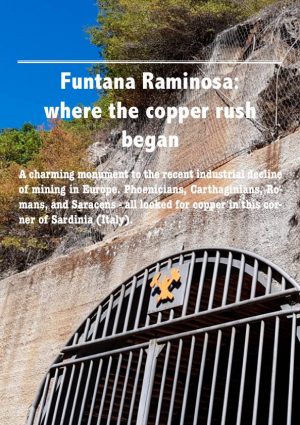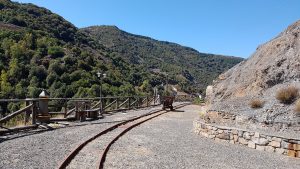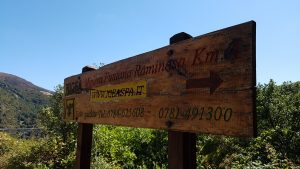 Isolated among the mountains, in the middle of Sardinia (Italy), with a butte here and there that breaks the skyline that surrounds and hides the mine from sight. Funtana Raminosa is a gem for few.
Isolated among the mountains, in the middle of Sardinia (Italy), with a butte here and there that breaks the skyline that surrounds and hides the mine from sight. Funtana Raminosa is a gem for few.
A forgotten gem. As if the lush surrounding nature, which wraps the mining site in a charming silence, broken only by the birds’ chirping, erases its memory too.
We are talking about a mine six miles away from the small village of Gadoni (fewer than 1,000 people), which seems to be specially designed to attract attention and interest, due to the rare beauty of the naturalistic context and the immaculate collection of still working mining tools. A charming monument to the recent industrial decline of mining in Europe.
In fact, the history of Funtana Raminosa has ancient origins. The archaeological finds of Nuragic bronzes testify the presence of copper mining activity in the area since 800 BC. Phoenicians, Carthaginians, Romans, and Saracens have crossed paths looking for copper in this corner of Sardinia. Names still recall that distant era: the Roman Gallery, the Fenicia Gallery, the Rio Saraxinus River, an explicit reference to the Saracens.
In 1517 the Spanish Pietro Xinto obtained the first research permits, and in 1882 the subterranean perlustration was carried out with innovative techniques by Vincenzo Ridi. It took four years to discover the real mining field, a result obtained almost by chance by the engineers Luigi Sanna Manunta and Emilio Jacob, engaged in tracing the Cagliari-Sorgono railway line.
In 1915, the mine went under the control of the Société Anonyme des Mines de Cuivre de Sardaigne. Nearly 63,000 tons of copper were exported to the United States. The French did not skimp on investments and provided Funtana Raminosa with modern drilling rigs and brand new machinery, but unfortunately not suitable for treating mixed sulfides in large quantities. In 1936 a new management focused its attention on the “San Eugenio” and “Brebegargiu” construction sites and created a small mining village that included a school, an outpatient clinic, a chemist’s workshop and a warehouse.

Funtana Raminosa mine railway (Photo: onlynaturalenergy.com)
When Fascism was at its peak, entrepreneur Marcello Ravizza speculated on the planning and construction of a “copper village” at Funtana Raminosa’s site. The village would have welcomed about 2200 workers and would have had a small airport. Fantasies destined to remain fantasies. Two cableways, still visible today, remind those days of great hope and ambition: one carried the mineral to the “Taccu Zippiri” height, from where the trucks moved to the Ortuabis railway station, taking the cargo to Cagliari’s port; the other used to transport the rough or unrefined material.
Funtana Raminosa’s property kept changing in the Sixties and the Seventies. Sardinian Cuprifera Society, EGAM, and SAMIM – all of them brought a new vision, new plans and seemed to believe in the mine future. Investments grew but based on unreal expectations. In 1982 nearly 30 billion Italian Lire were invested in the construction of a treatment plant, which came into operation in 1982 to be closed after only eight months and never reopened. It was supposed to be the pinnacle but turned out to be the beginning of the end.

Funtana Raminosa entrance: IGEA still ensures maintenance but can not provide guided tours anymore (Photo: onlynaturalenergy.com)
In 1983, all construction sites were shut down. In few years the mine passed into the control of the IGEA – the Geo Environmental Interventions company owned by the Sardinian Regional Government – which since then has been ensuring maintenance and protection. After having tried discreetly to embark on a touristic-educational exploitation path, the company interrupted the visits in 2014.
The new chapter is called Sardinian Geopark, which involves the local government of Gadoni. Given the budgetary constraints typical of most municipalities, the question is how will the ordinary maintenance and exploitation of such a large and complex site be ensured? When contacted by ONE, the Mayor said he could not answer. But he promised to do it on another occasion. Not arrived yet.
Mine tour courtesy of IGEA SpA.
Special thanks to Andrea Loddo, Filippo Congia, Orazio Carboni.

